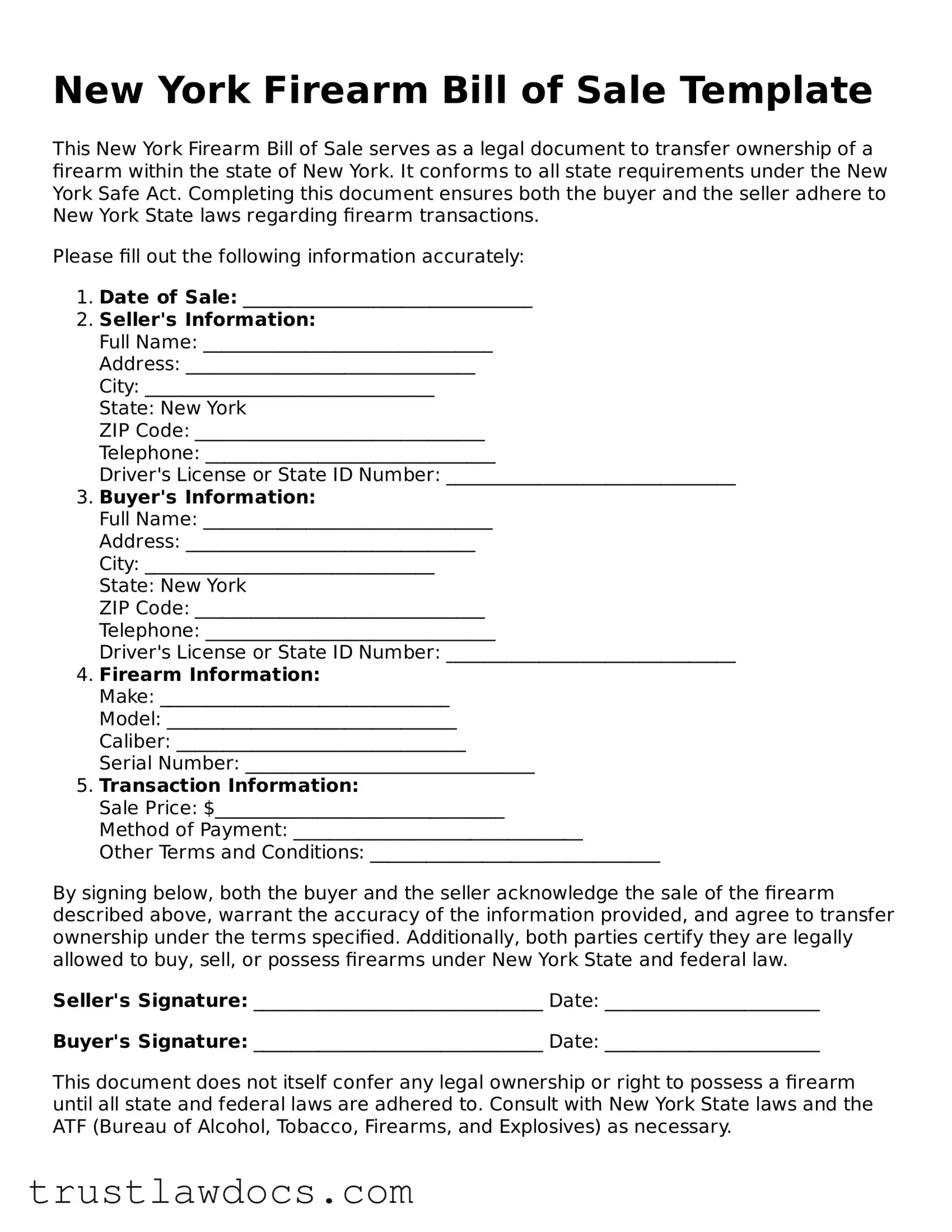What is a Firearm Bill of Sale form?
A Firearm Bill of Sale form is a legal document that records the sale or transfer of a firearm from one party to another. It serves as proof of purchase and documents the details of the transaction such as the identities of the buyer and seller, the date of the sale, and specifics about the firearm including make, model, and serial number.
Why is a Firearm Bill of Sale necessary in New York?
In New York, the law requires that all firearm transactions be recorded to maintain accountability and ensure the legal transfer of ownership. This form helps both parties prove the legality of the sale and provides a record that can be useful for tax purposes, warranty claims, or in the event of disputes or investigations regarding the firearm.
Does the Firearm Bill of Sale form need to be notarized in New York?
Yes, for the form to carry legal weight, it is recommended that the Firearm Bill of Sale be notarized. Notarization authenticates the identities of the signing parties and helps to further legitimize the document, making it more difficult to contest.
What information needs to be included in the form?
The form should include comprehensive details such as the names and addresses of both the buyer and seller, the date of sale, the sale price, and a detailed description of the firearm (make, model, caliber, and serial number). It may also include terms of the sale, warranty information, and signatures of both parties.
Can I create a Firearm Bill of Sale on my own?
Yes, individuals can draft a Firearm Bill of Sale by themselves. However, it is crucial to ensure that the document includes all required information to make it legally binding. Many opt to use a template or consult with a legal professional to guarantee compliance with New York laws.
Is a Firearm Bill of Sale the same as a firearm registration?
No, a Firearm Bill of Sale is not the same as firearm registration. The Bill of Sale documents the transaction between a buyer and a seller. In contrast, firearm registration is a separate process that involves entering the firearm's details into a government database, signifying legal ownership under the registrant's name. In New York, completing both steps is necessary for the legal possession of certain types of firearms.
What happens if I don't use a Firearm Bill of Sale in New York?
Failure to use a Firearm Bill of Sale when conducting a firearm transaction can lead to potential legal issues. Without it, there is no formal proof of the transaction, making it difficult to establish the history of ownership. This lack of documentation can complicate matters related to inheritance, theft, loss, or if the firearm is later used in a criminal activity.
Can the Firearm Bill of Sale be used for private sales between individuals?
Yes, the Firearm Bill of Sale is designed to document private sales or transfers between individuals. It provides a legal framework that ensures the private sale complies with New York state laws, offering protection and clarity for both parties involved in the transaction.
How long should I keep my copy of the Firearm Bill of Sale?
It is advisable to keep your copy of the Firearm Bill of Sale indefinitely. This document is an important piece of history for the firearm and can be crucial for future legal purposes, such as proving ownership or reporting a stolen firearm. Always keep it in a safe and secure place where it can be easily accessed when needed.
Are there any penalties for falsifying a Firearm Bill of Sale?
Yes, falsifying a Firearm Bill of Sale or providing false information on the document is a serious offense and can lead to penalties such as fines or imprisonment. The document must accurately reflect the details of the transaction and the identities of the parties involved to ensure the legal transfer of the firearm.
